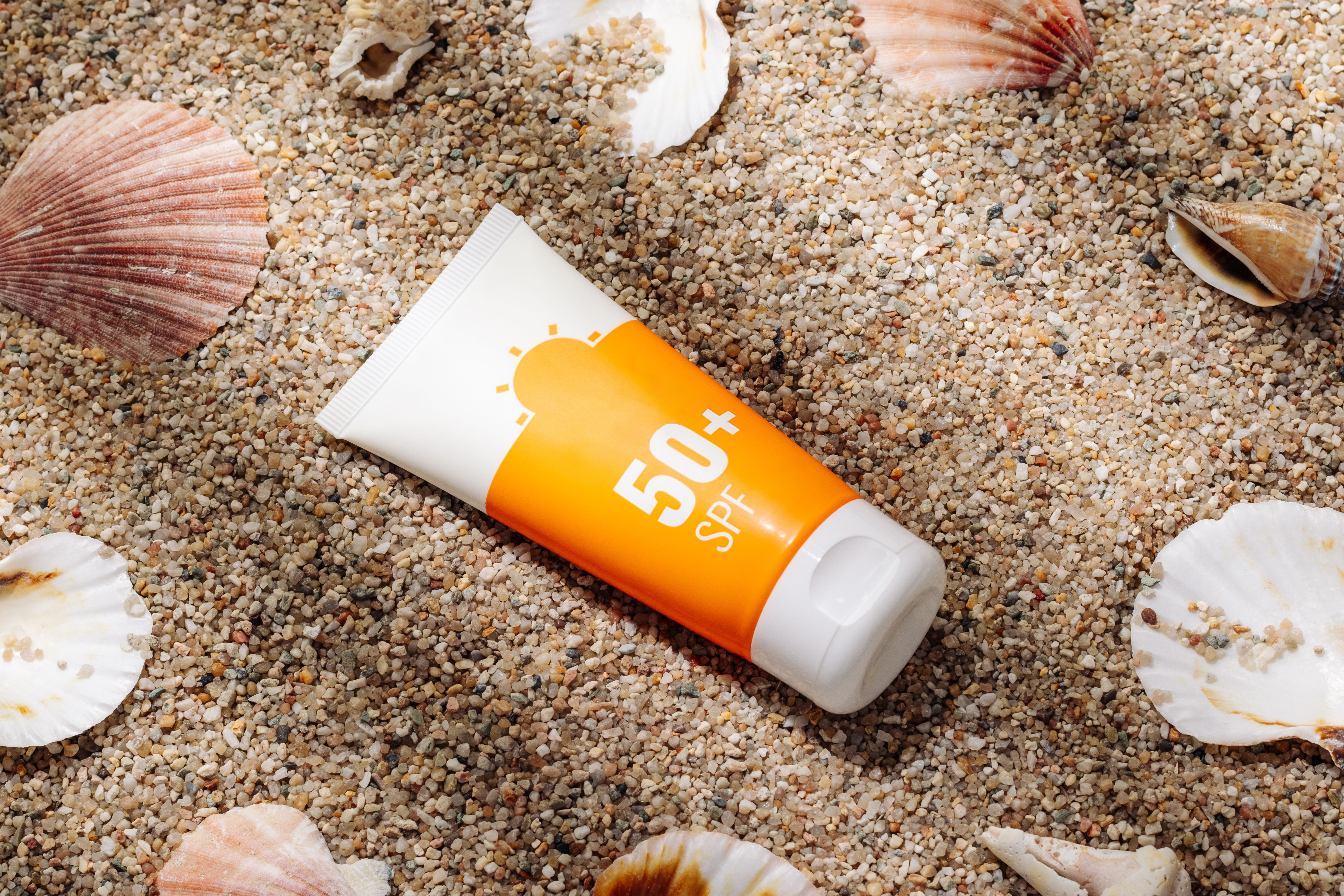Examining Urocanic Acid Using High-Resolution Laser Spectroscopy
Researchers from the University of Amsterdam investigate the properties of urocanic acid using high-resolution laser spectroscopy combined with resonance enhanced multiphoton ionization to help develop safer sunscreen products.
A new study published in Physical Chemistry Chemical Physics examined the properties of urocanic acid and its derivatives, which provides scientists with new information that can improve the safety of sunscreens and other ultraviolet (UV) filters (1).
Urocanic acid, a compound naturally found in the skin, is known for its UV-A and UV-B absorbing properties (1,2) and was originally used in many sunscreens. However, because of health risks associated with the cis-isomer, its use in sunscreen-related products was discontinued (1,2).
Orange tube of sunscreen on sandy beach top view | Image Credit: © Ольга Голубева - stock.adobe.com

Researchers from the Van’t Hoff Institute for Molecular Sciences at the University of Amsterdam recently explored the properties of urocanic acid and its derivatives in the hope of uncovering information that can help companies and scientists develop safer sunscreen products. The study was led by Wybren Jan Buma, and it provides a comprehensive understanding of the behavior of urocanic acid and its derivatives under various conditions, offering a pathway to safer and more effective UV filters (1).
In their study, Buma's team employed high-resolution laser spectroscopy combined with resonance enhanced multiphoton ionization (REMPI) techniques. This approach allowed them to achieve a fundamental understanding of the electronically excited states of urocanic acid and how these states are influenced by various chemical modifications (1).
One of the study's critical advancements was the use of laser desorption to seed the investigated compounds into supersonic expansions. Doing so helped the researchers bypass the need for heating to obtain sufficient vapor pressure (1). This method enabled the researchers to record excitation spectra of urocanic acid for the first time (1). They discovered that previous studies had suffered from thermal decarboxylation reactions, leading to incorrect spectra attributed to decomposition products (1).
The study also explored the electronic states of urocanic acid and its derivatives. In their study, two nearly degenerate electronically excited states, 1nπ* and 1ππ* were identified. Despite its intrinsically small oscillator strength, the lower energy 1nπ* state becomes visible in excitation spectra because of vibronic coupling with the strongly allowed 1ππ* state at slightly higher energies (1). This coupling results in an excitation spectrum dominated by false origins and extensive vibrational activity (1).
Conversely, the excitation spectrum of the 1ππ* state is characterized by Franck-Condon activity of modes reflecting the geometry changes associated with excitation from a bonding C6=C7 orbital to an antibonding orbital (1). Nanosecond pump-probe studies indicated that the decay of the 1ππ* state is primarily dominated by internal conversion to the 1nπ* state, likely mediated by a conical intersection between the two states (1).
The research also examined the effects of esterification and NH alkylation on the photophysical properties of urocanic acid. Esterification of the carboxylic acid group showed minimal impact, whereas NH alkylation of the N3H tautomer significantly influenced the excited-state dynamics, leading to more favorable photoprotective properties (1).
In contrast, methylation of NH in the imidazole ring resulted in significant changes. The N1–Me tautomer exhibited an excitation spectrum with well-resolved vibrational bands and slower decay of the 1ππ* levels, indicating distinct photophysical behavior compared to the N3H tautomers (1).
The conclusions borne from this study could be used to explore ways to improve the safety sunscreens. By reducing the immunosuppressive properties of cis-urocanic acid and ensuring the safe dissipation of absorbed UV energy, these derivatives could serve as safer UV filters in sunscreens (1). The study concludes with the researchers saying that the behavior of these compounds in isolated conditions may differ from their behavior in practical applications, so future studies could explore this topic in more detail.
References
(1) Fan, J.; Lemmens, A. K.; Sanders, H.; et al. Urocanic Acid as a Novel Scaffold for Next-Gen Nature-Inspired Sunscreens: I. Electronic Laser Spectroscopy Under Isolated Conditions. Phys. Chem. Chem. Phys. 2024, ASAP. DOI: 10.1039/D4CP02087A
(2) Gibbs, N. K.; Norval, M. Urocanic Acid in the Skin: A Mixed Blessing? J. Invest. Derm. 2011, 131 (1), 14–17. DOI: 10.1038/jid.2010.276
Chinese Researchers Develop Dual-Channel Probe for Biothiol Detection
April 28th 2025Researchers at Qiqihar Medical University have developed a dual-channel fluorescent probe, PYL-NBD, that enables highly sensitive, rapid, and selective detection of biothiols in food, pharmaceuticals, and living organisms.